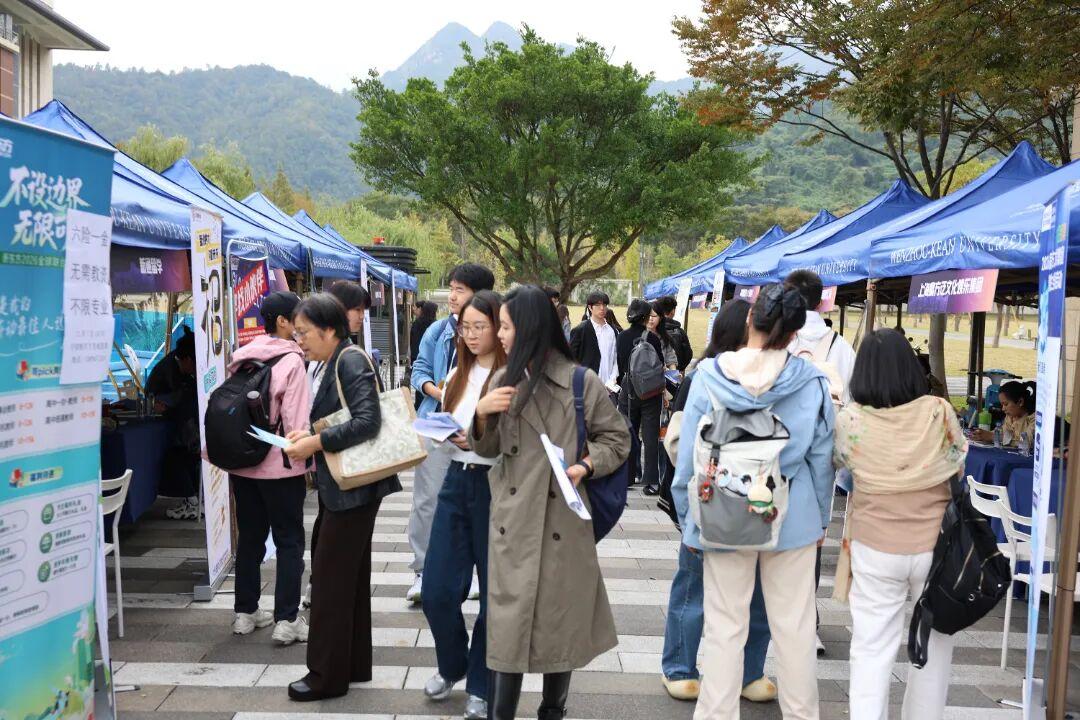
Huaqiong Li, Ph.D.
-
Position:Graduate Tutor
-
College:College of Science, Mathematics and Technology
Biography
Bioactive Materials Research Group
At present, there are 3 PhDs, 2 Research Assistants and 6 postgraduate students in the research group. Dr. Li Huaqiong, leader of the research group, was selected into the China-Australia Young Scientist Exchange Program of the Ministry of Science and Technology in 2019 and the 580 Overseas Elite Program of Wenzhou City. He has published more than 20 SCI papers in biomaterials related journals (such as ACS Applied Materials and Interfaces, Acta Biomaterialia, Chemical Engineering Journal, Journal of Materials Chemistry B, etc.). After joining the Institute in 2015, he has granted five projects at the national, provincial and municipal levels (with a total of more than 5 million). He has applied for 6 patents (with one authorized). He was also supported by the exchange program of the Ninth Regular Session of the China-Croatia Science and Technology Cooperation Commission of the Ministry of Science and Technology.
Education
2013 Ph.D. in Biomaterials, Nanyang Technological University, Singapore
Academic Experience
1.2014-01 ~ 2015-03: Project Engineer, Nanyang Polytechnic, Singapore
- Risk assessment of ultrafine particles (UFPs) in the indoor air
- High-throughput screening for particles and chemicals toxicity
2.2013-01 ~ 2014-01: Project Officer, Nanyang Technological University, Singapore
- Finite Element Analysis of structural cells used for tree planting in constrained spaces
- Engineering micro-nano hybrid grafts using micro-contact printing and electrospinning method
3.2009-01 ~ 2013-01: Ph.D. candidate, Biomaterials, Nanyang Technological University, Singapore
- Laser machining of different micropatterns on the surface of bio-polymers
- The effect of microtopology on stem cells and its implication in tissue engineering
Research Interests
- Xenogeneic biological materials: use gene knockout pigs and 3D printing technology to develop xenogeneic bone/cartilage repair materials;
- Biological interface: Use various technologies to modify the surface of biological materials and observe the interaction between cells and materials. Mainly study the impact of the physical characteristics of the cell microenvironment on cell growth, such as stem cell differentiation, cell aging, etc.;
- Nanomedicine: Construct a targeted nanomedicine delivery system for related research on tumor treatment.
Selected Research Publications
- W.T. Sow, F. Ye, C. Zhang, H. Li,*Smart materials for point-of-care testing: From sample extraction to analyte sensing and readout signal generator. Biosens Bioelectron, 170, 112682, 2020.
- H. Li,*Y. Hou, L. Li. Tunable design of yolk-shell ZnFe2O4@C composites for enhancing electromagnetic wave absorption. Powder Technol 378, 216, 2021.
- L. Zhang, C. Mu, T. Zhang, Y. Wang, Y. Wang, L. Fan, C. Liu, H. Chen, J. Shen, K. Wei, H. Li,* Systemic Delivery of Aptamer Conjugated XBP1 siRNA Nanoparticle for Efficient Suppression of HER2+ Breast Cancer. ACS Appl Mater Interfaces,12, 32360, 2020.
- Q. Pan, C. Gao, Y. Wang, Y. Wang, C. Mao, Q. Wang, S.N. Economidou, D. Douroumis, F. Wen, L.P. Tan, H. Li.* Investigation of bone reconstruction using an attenuated immunogenicity xenogenic composite scaffold fabricated by 3D printing. Bio-Design & Manufacturing, 3, 396, 2020.
- H. Li, C. Gao, L. Tang, C. Wang, Q. Chen, Q. Zheng, S. Yang, S. Sheng, X. Zan. Lysozyme (Lys), tannic acid (TA), and graphene oxide (GO) thin coating for antibacterial and enhanced osteogenesis. ACS Appl Bio Mater 3, 673, 2020.
- T. Zhu, J. Mao, Y. Cheng, H. Liu, L. Lv, M. Ge, S. Li, J. Huang, Z. Chen, H. Li,* L. Yang, Y. Lai. Recent Progress of Polysaccharide-Based Hydrogel Interfaces for Wound Healing and Tissue Engineering. Adv Mater Interfaces 1900761, 2019.
- M. Li, # H. Li, # Q. Pan, C. Gao, Y. Wang, S. Yang, X. Zan, Y. Guan. Graphene oxide and lysozyme ultrathin films with strong antibacterial and enhanced osteogenesis. Langmuir 35, 6752, 2019.
- C. Gao, L. Tang, J. Hong, C. Liang, L.P. Tan, H. Li.* Effect of laser induced topography with moderate stiffness on human mesenchymal stem cell behavior. J Phys Mater 2, 034006, 2019.
- Y.S. Lui, W.T. Sow, L.P. Tan, Y. Wu, Y. Lai, H. Li.* 4D Printing and Stimuli-responsive Materials in Biomedical Aspects. Acta Biomater 92, 19, 2019.
- Y. Wang, B.H. Lee, Allan Z. Zhao, H. Li.* Biomaterials in Bone Tissue Engineering. Mater Sci Technol DOI: 10.1002/9783527603978.mst0481, 2019.
- H. Li,* Y. Hou, L. Li. Synthesis of the SiO2@C composites with high-performance electromagnetic wave absorption. Powder Technol 343, 129, 2019.
- Z.S. Huang; Y.Y. Quan; J.J. Mao; Y.L. Wang; Y. Lai; J. Zheng; Z. Chen; K. Wei; H. Li.* Multifunctional superhydrophobic composite materials with remarkable mechanochemical robustness, stain repellency, oil-water separation and sound-absorption properties. Chem Eng J 358, 1610, 2019.
- H. Li,* Q. Ye, M. Su. Application of Stem Cells and Advanced Materials in Nerve Tissue Regeneration. Stem Cells Intl 4243102, 2018.
- L. Luo, Y. He, X. Wang, B. Key, B.H. Lee, H. Li,* Q. Ye. Potential Roles of Dental Pulp Stem Cells in Neural Regeneration and Repair. Stem Cells Intl 1731289, 2018.
- Q. Wang, J. Huang, H. Li, * Allan Z. Zhao, Y. Wang, K. Zhang, H. Sun, Y. Lai. Recent advances in smart TiO2 nanotube platforms for sustainable drug delivery applications. Intl J Nanomed 12, 151, 2017.
- M. L. Chua,# M. I. Setyawati,# H. Li,# C.Y.F. Hay, S. Gurusamy, F. Teoh, D. T. Leong, S. George. Particulate matter from indoor environments of classroom induced higher cytotoxicity and leakiness in human microvascular endothelial cells in comparison to those collected from corridor. Indoor Air 27, 551, 2017.
- H. Li,* F. Wen, H. Chen, M. Pal, Y. Lai, Allan Z. Zhao, L.P. Tan. Micropatterning extracellular matrix proteins on electrospun fibrous substrate promote human mesenchymal stem cell differentiation toward neurogenic lineage. ACS Appl Mater Interfaces 8, 563, 2016.
- H. Li, C.Y.F. Hay, W. Shi, S. Gurusamy, S. Li, M.N. Krishnan, S. George. Size and site dependent biological hazard potential of particulate matters collected from different heights at the vicinity of a building construction. Toxicol Lett 238, 20, 2015.
- H. Li,* F. Wen, X. Wang, L.P. Tan. Role of RhoA/Rho kinase signaling pathway in microgroove induced stem cell myogenic differentiation. Biointerphases 10, 021003, 2015.
- H. Li, Y. Lai, J. Huang, Y. Tang, L. Yang, Z. Chen, K.Q. Zhang, X. Wang, L.P. Tan. Multifunctional wettability pattern prepared by laser processing on superhydrophobic TiO2 nanostructured surfaces. J Mater Chem B 3, 342, 2015. (Inside back cover highlighted)
- H. Li, Y.S. Wong, F. Wen, K.W. Ng, Gary K.L. Ng, Subbu S. Venkatraman, Freddy Y.C. Boey, L.P. Tan, Human mesenchymal stem cell behaviour on direct laser micropatterned electrospun scaffolds with hierarchical structures. Macromol Biosci 13, 299, 2013.
- H. Li, F. Wen, Y.S. Wong, Y.C. Freddy Boey, Venkatraman S. Subbu, David T. Leong, K.W. Ng, Gary K.L. Ng, L.P. Tan, Direct laser machining induced topographic pattern promotes human mesenchymal stem cell differentiation towards myogenic lineage. Acta Biomater 8, 531, 2012.
- H. Li, H. Xian, G. Zhao, Synthesis and crystal structures of La(III), Y(III) complexes of homoveratric acid with 1,10-phenanthroline. J Rare Earths 28, 7, 2010.
- H. Li, X. Zhao, X. Hu, G. Zhao. Synthesis, characterization, crystal structure and non-isothermal dehydration kinetics of the copper(II) complex. J Coord Chem 61, 3493, 2008.
College Programs
- B.S. Chemistry
- B.S. Environmental Science
- B.S. Biology (Cell and Molecular Biology Option)
- B.A. in Mathematical Sciences (Data Analytics Option)
- B.S. Computer Science




